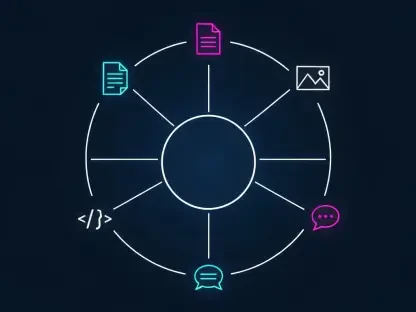Effective cybersecurity compliance is critical for protecting sensitive information, maintaining user trust, and ensuring business stability. Achieving compliance requires both strategic planning and the integration of robust security measures into daily operations. Here are meaningful insights on how businesses can accomplish this goal.
Businesses need to recognize that cybersecurity compliance is not a static process but a dynamic and evolving practice. This necessitates continuous monitoring, adaptation, and a proactive stance to stay ahead of emerging cyber threats, thereby ensuring robust and resilient security postures.
Adopting an Agnostic Approach to Technology Stacks
One important strategy is to adopt an agnostic approach to technology stacks. This means evaluating and selecting technologies without bias toward specific vendors, thereby ensuring the most robust and secure infrastructure tailored to the organization’s needs. In today’s rapidly evolving technological landscape, vendor neutrality allows for a more objective assessment and integration of best-of-breed solutions.
This approach enhances overall resilience by preventing security gaps that often stem from vendor dependency. It allows IT departments to build a flexible infrastructure capable of adapting to changing security needs and regulatory requirements. By focusing on the functionality and security of the technology rather than brand loyalty, organizations can achieve a more robust and cohesive security framework.
Building Flexible Compliance Strategies
Cybersecurity compliance should be viewed as a dynamic process rather than a set of static rules. Building flexible compliance strategies that can evolve with changing regulations and emerging threats is crucial. For instance, regulations and industry standards often undergo revisions to address new security challenges, necessitating adaptability from the businesses they govern.
Organizations should regularly revisit and update their compliance measures to ensure they remain effective against new threats. By integrating flexibility into compliance strategies, businesses can respond rapidly to changes in the threat landscape, thereby maintaining a high level of security and resilience over the long term.
Aligning Compliance with User Trust
Understanding the interplay between compliance and user trust is essential. Regulations like GDPR have a profound impact on user experience and business operations. Compliance strategies must be designed to support and build user trust rather than undermining it. Effective communication of privacy and security practices to customers can enhance their confidence in the organization.
By making user trust a central component of compliance efforts, businesses can achieve regulatory adherence while also delivering a positive user experience. This alignment ensures that compliance measures do not disrupt operations or customer satisfaction, which are both crucial for sustaining long-term business success.
Prioritizing Comprehensive IT Compliance
Achieving effective cybersecurity compliance involves prioritizing comprehensive IT compliance. This means regular audits, proactive monitoring, and the integration of security measures into daily operations. Conducting these activities ensures that systems and processes consistently meet security standards, thereby reducing the likelihood of breaches and compliance issues.
Training employees on the latest cybersecurity practices transforms company culture toward proactive security posture. Maintaining this level of vigilance helps organizations stay ahead of potential threats, providing a solid foundation for long-term security and compliance.
Design with Compliance in Mind
Embedding compliance into system design from the outset is far more effective than adding security measures retrospectively. Early integration of security requirements, such as data encryption, secure authentication, and audit logs, avoids technical debt and ensures smoother operations. Adopting best practices from the beginning simplifies compliance management and mitigates security risks.
This approach also conserves resources by eliminating the need for extensive retrofitting to address compliance gaps later. Proactively designing systems with security in mind enhances operational efficiency and results in robust, compliant infrastructure from the ground up.
Developing a Security-First Culture
Creating a security-first culture within the organization is more impactful than relying solely on technical defenses. Educating employees about cyber threats and embedding cybersecurity awareness into daily operations significantly strengthens overall security. When employees understand and prioritize security, the likelihood of human error-based breaches diminishes.
Encouraging a security-first mindset involves ongoing training and awareness programs tailored to different roles within the organization. This cultural shift ensures that security becomes a shared responsibility, fostering a more secure environment across all levels of the company.
Understanding the Why Behind Compliance
Viewing compliance as a checklist is insufficient. Businesses must understand the underlying risks and real-world consequences of non-compliance to create a targeted defense strategy. This deeper understanding helps in communicating the importance of compliance to non-technical staff and fostering a proactive security posture across the organization.
By recognizing the tangible impacts of non-compliance, such as financial penalties, reputational damage, and operational disruptions, companies can craft more effective and comprehensive security strategies that go beyond mere regulatory adherence.
Grasping the Business Side of Compliance
Understanding how cybersecurity compliance impacts business goals is critical. This insight helps in communicating better with business leaders and prioritizing security efforts effectively. Aligning compliance activities with business objectives ensures that security measures support overall strategic goals, fostering a stronger and more collaborative security culture.
Effective communication between technical teams and business leaders is essential for achieving this alignment. It ensures that compliance initiatives are viewed as integral components of business success rather than mere regulatory obligations.
Developing a Proactive Security Strategy
Compliance should be part of a proactive security strategy that involves real-time monitoring and continuous employee education. Viewing cybersecurity as an ongoing process helps in mitigating risks and building resilience. Proactive measures, including threat intelligence and incident response planning, enable organizations to identify and address threats before they can cause significant damage.
Continuous employee education ensures that the workforce remains aware of new threats and best practices for avoiding them. This ongoing commitment to proactive security helps maintain the integrity of systems and data, enhancing overall cybersecurity compliance.
Integrating Compliance and Reputation Management
Compliance documentation should include communication protocols for managing reputation during security incidents. An integrated approach to compliance and reputation management ensures that regulatory requirements are met, and public trust is maintained through effective incident handling and communication. Transparent and efficient management of security incidents helps uphold the organization’s reputation while fulfilling compliance obligations.
Preparedness in communication strategies during security incidents minimizes the impact on public perception and demonstrates the organization’s commitment to responsible security practices. This contributes to maintaining and strengthening user trust even in the face of adverse events.
Updating and Auditing Third-Party Tools
Regular updates and audits of third-party tools are necessary to prevent vulnerabilities and threats. Ensuring that third-party integrations adhere to the organization’s security standards protects customer data and online reputation. Implementing strict compliance protocols for these integrations enhances overall security by identifying and addressing potential weak points introduced by external vendors.
Vigilance in managing third-party tools ensures that all components of the technology stack are consistently secure, reducing the overall risk profile of the organization and maintaining its compliance posture.
Assessing Third-Party Vendors Thoroughly
Developing rigorous assessment processes for third-party vendors helps mitigate compliance risks. Detailed vetting and thorough documentation of data flow prevent regulatory penalties and compliance surprises. Ensuring that vendors align with the organization’s security requirements is critical to maintaining a secure and compliant environment.
Comprehensive vendor assessments involve evaluating security practices, historical performance, and contractual adherence to compliance standards. Successfully managing vendor relationships and their associated risks ensures a more secure partnership and reduces vulnerabilities.
Securing Third-Party Application Integration
Establishing strong security protocols for third-party applications is crucial to prevent breaches. Understanding cybersecurity insurance terms also ensures adequate coverage against emerging threats. By securing integrations and having comprehensive insurance coverage, organizations can build a robust defense against potential vulnerabilities from external applications.
This approach provides a safety net, ensuring that in the event of a breach caused by a third-party application, the organization has the necessary coverage to address the financial and operational impacts, thereby enhancing overall security preparedness.
Treating Cybersecurity as a Business Imperative
Cybersecurity compliance should be viewed as a strategic business function essential for protecting trust, reputation, and stability. Embedding security into business decisions improves collaboration and creates a proactive security posture. When cybersecurity is integral to business strategies, it leads to a more cohesive approach to preventing and managing risks.
Recognizing cybersecurity as a core component of business operations ensures that security considerations are embedded into decision-making processes, driving a comprehensive and organization-wide commitment to maintaining a secure environment.
Managing Digital Assets and Documents Securely
Securing sensitive information, maintaining user trust, and ensuring business stability heavily rely on effective cybersecurity compliance. Achieving this level of compliance goes beyond merely adhering to regulations—it requires strategic planning and the integration of strong security measures into daily business activities. Here are some valuable insights on how businesses can reach this crucial goal.
Firstly, it’s essential to understand that cybersecurity compliance is an ongoing process, not a one-time project. Given the ever-evolving nature of cyber threats, businesses must engage in continuous monitoring and adaptation. This involves regularly updating security protocols, keeping abreast of new threats, and tweaking strategies to suit the changing landscape. By doing so, companies can maintain a robust and resilient security posture.
Moreover, achieving cybersecurity compliance necessitates a proactive approach. Businesses should not wait for threats to occur before taking action. Instead, they should anticipate potential risks and address them in advance. This might mean investing in the latest cybersecurity technologies, conducting frequent security audits, and providing ongoing training for employees to recognize and respond to threats effectively.
In conclusion, achieving effective cybersecurity compliance is paramount in today’s digital age. It requires a combination of strategic planning, continuous monitoring, and a proactive stance to protect sensitive information, maintain user trust, and ensure long-term business stability.









